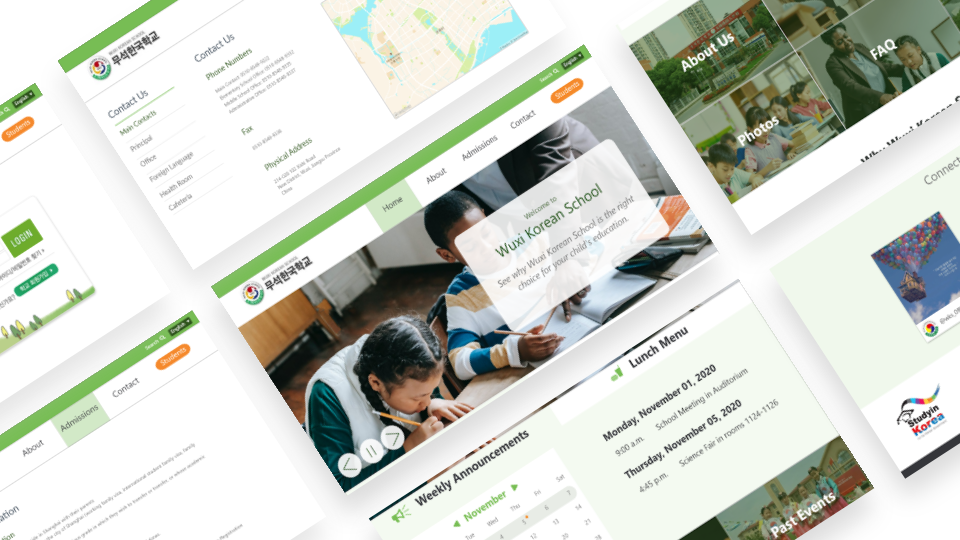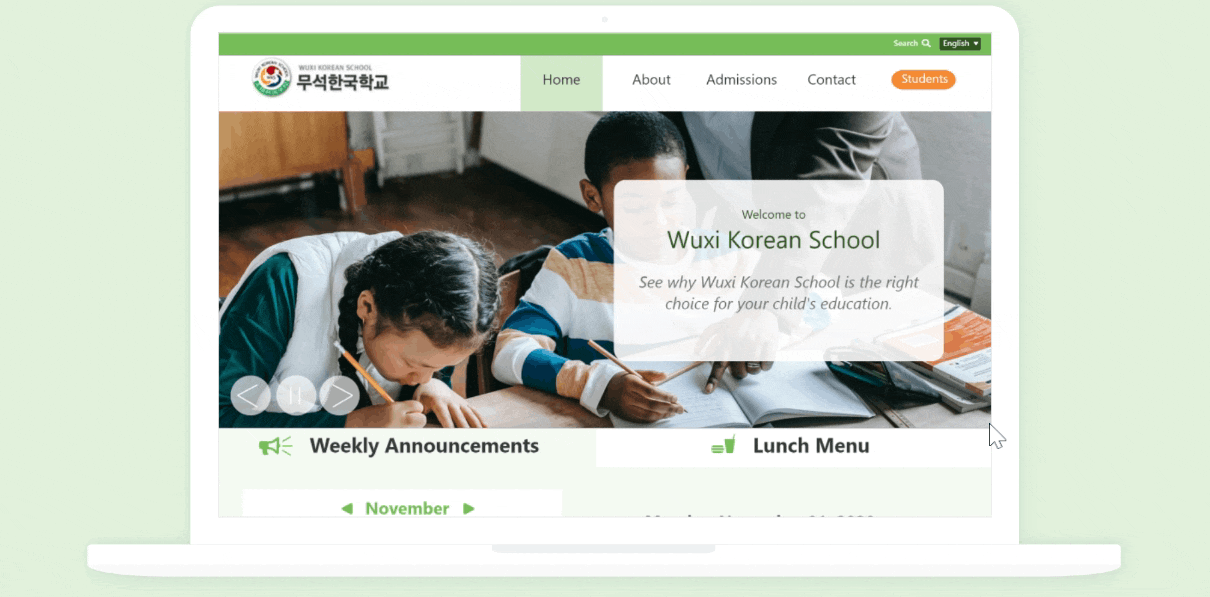Wuxi Korean School
Modern redesign of a school webpage.
Modern redesign of a school webpage.
Founded in 2006, Wuxi Korean School offers world-class education to Korean students living in Wuxi and the surrounding Suzhou area in China.
With about 550 students and 100 staff, Wuxi Korean School (WKS) ensures each student gets the education and attention they need to succeed in English and beyond. Wuxi Korean School is recognized not only by the Chinese government but also by the South Korean government for its excellence.
Objective
In order to have continuous growth in admissions, the school website needs an upgrade to both create a more user-friendly experience and to best advertise all of their achievements.
There is no affiliation with Wuxi Korean School for this project other than an English Teaching role.
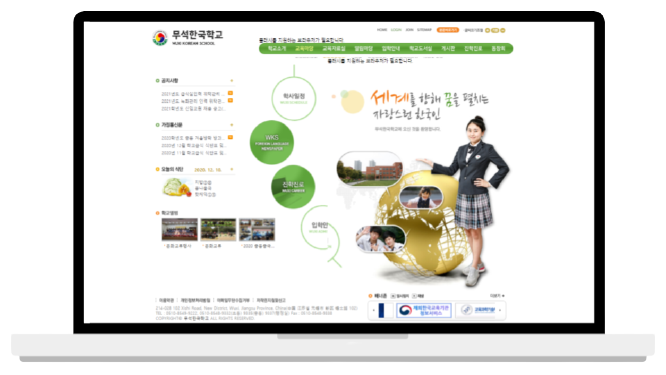
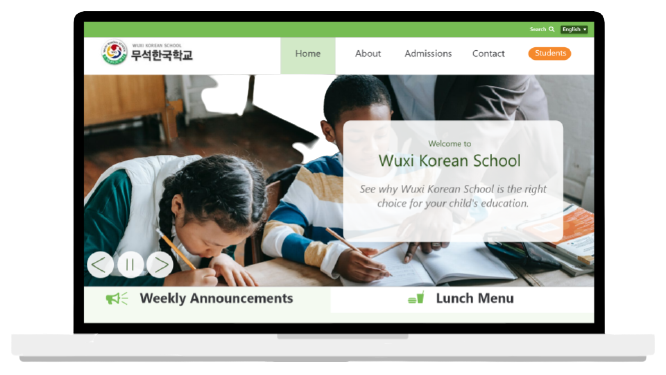
A before and after of the Wuxi Korean School homepage.
Process: Market Research, Competitive Analysis, User Interviews
At the discovery phase of my project, I conducted market research about the typical user of school websites, competitive analysis of other schools in that area's websites, and user interviews in order to get a better understanding of the problem.
According to research conducted by Southern Utah University, professional and creative web designs built "a powerful emotional connection" with their visitors. The main reasoning concluded that professional and accessible web design is important in increasing recruitment, user engagement, and trust in credibility.
School websites must appeal to several different users, the main audience consisting of current students, parents, school staff, and prospective clients, each requiring different needs to be met. WKS currently enrolls students from kindergarten to 12th grade and hires Korean, Chinese, and Native-English speakers, yet their website is only in Korean, thus limiting their accessibility to a large percentage of their prospective users.
I compared the websites of a few schools in the surrounding area (ISW-International School of Wuxi and SKS-Shanghai Korean School) to that of WKS in order to assess the usability and benefits of each.
I discovered several areas for improvement in the WKS page:
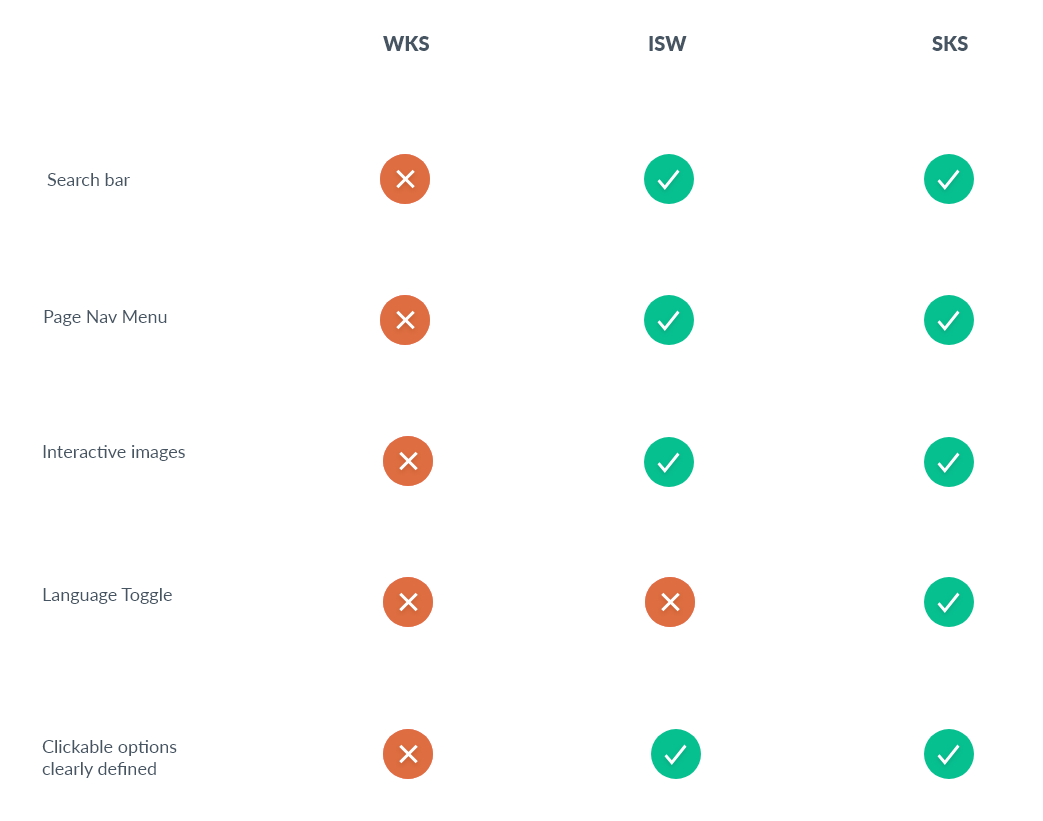
Comparison chart between Wuxi Korean School's website usability and other international schools in the surrounding area.
I conducted several interviews and usability tests of the current website among 6 people aged 13-45 (target school page users) and recorded their pain points.
Each participant was given a scenario (eg. You are a parent wanting to find information about the curriculum). I recorded the time that they took to reach the desired page. Many struggled, with some abandoning altogether. Others would click around on the page until they found clickable spaces that lead them to another page.
Overall, users seemed fairly unhappy with the layout of the webpage. Many users claimed it was "too difficult to navigate" or "very old-school."
I set up three personas (student, parent, employee) and referred to them throughout the entire product development process to ensure I would meet their individual needs within the same design. After the interviews, I discovered these top frustrations:
Process: Wireframes using hand-drawn sketches and Figma. Prototype using AdobeXD.
At the beginning of my design process I created lo-fidelity sketches in order to visualize the changes needed to be made to improve the user experience. I took important note of the content that was displayed on the original site and made sure to incorporate them on the new layout. I wanted to make sure the main topics were still a main part of the page while changing how it is diplayed and the interactions that occur.
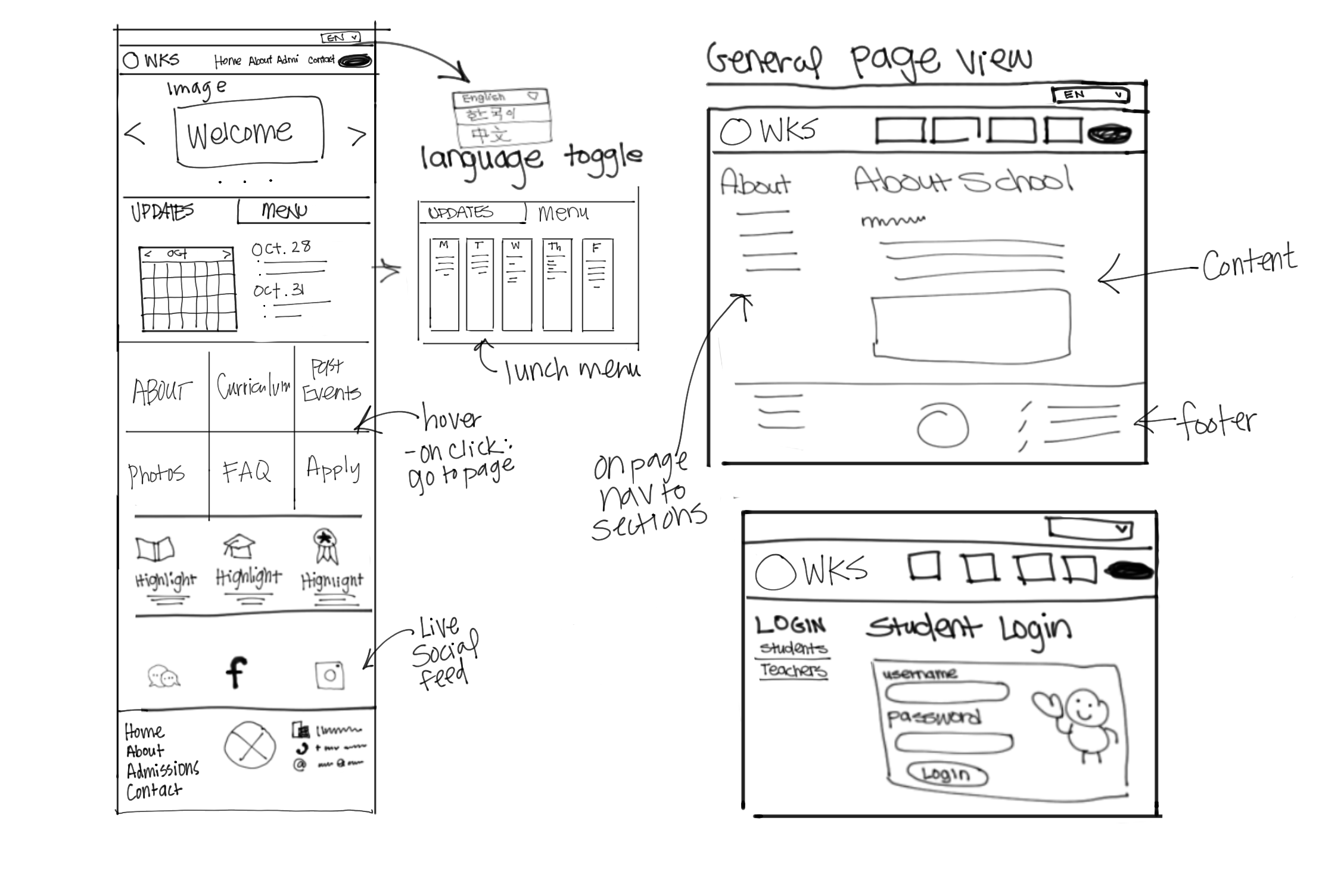
Once I tested out all the usability mistakes, I started designing the final screens in AdobeXD.
I based the design on school websites located in the US and other schools in the surrounding area, opting for a layout that encompasses the entire screen and is a bit less overwhelming with text.
